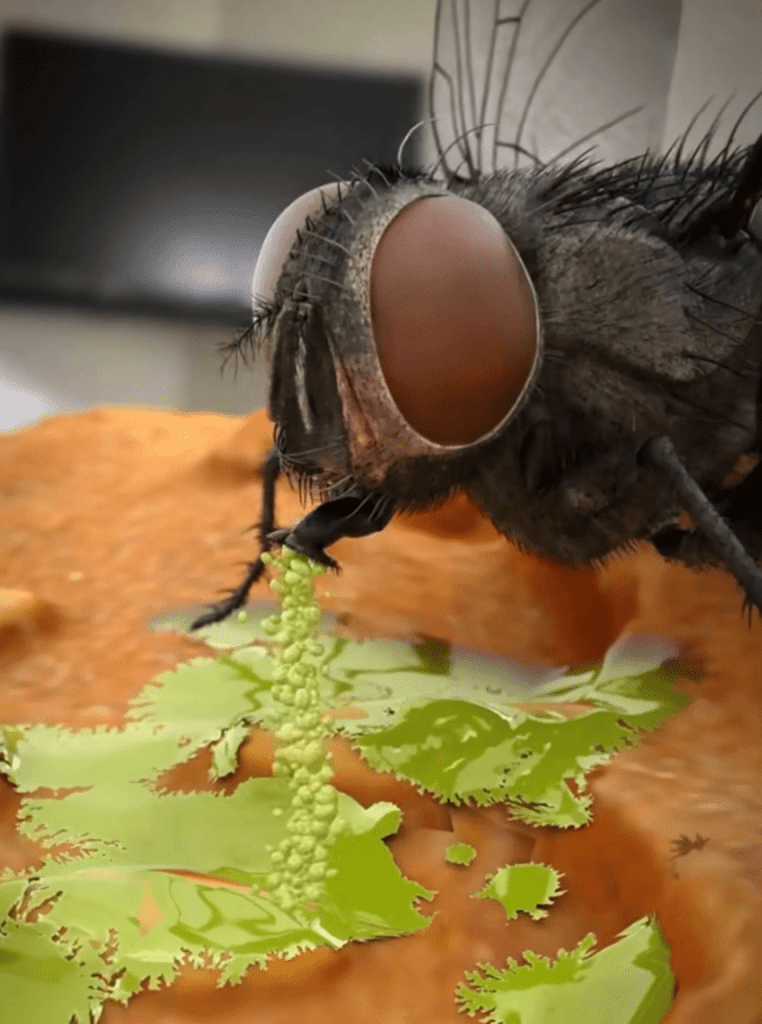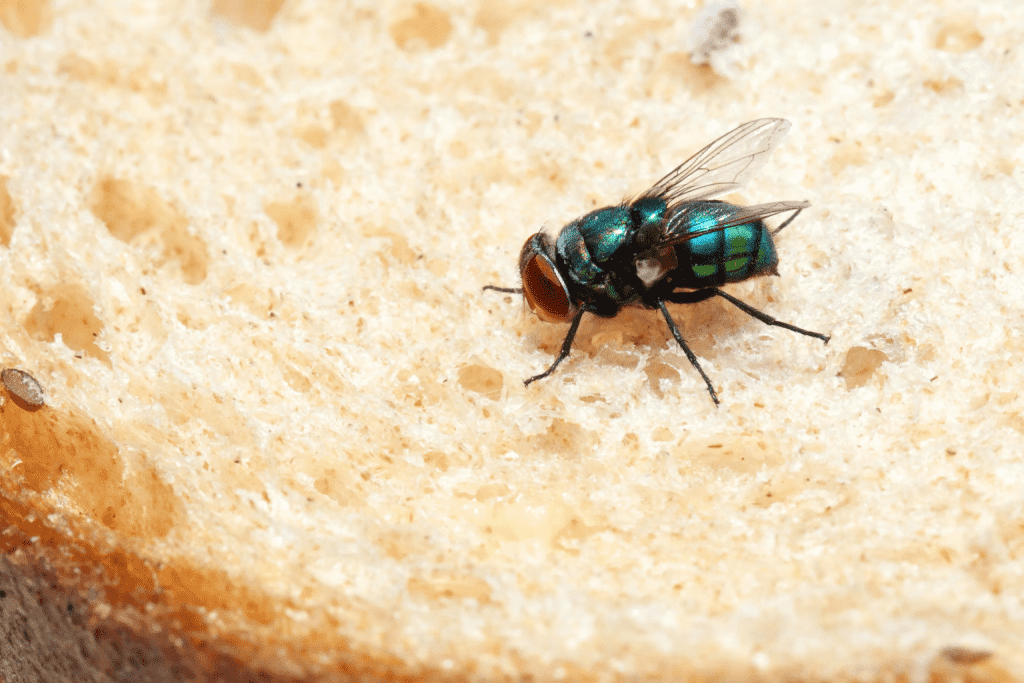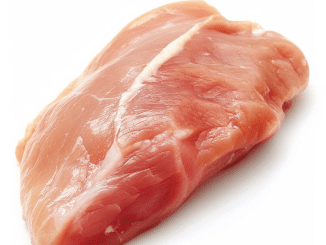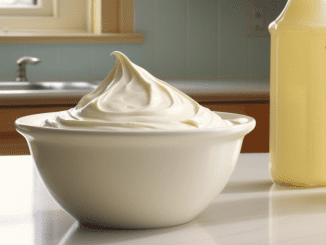Few things ruin a meal faster than the sight of a fly landing on your food. At first glance, you might shrug it off, thinking, It’s just a fly—no big deal. But what if you knew what really happens when that tiny intruder takes a seat at your table? A recent simulation has left people thoroughly disgusted, revealing the unsettling reality behind a fly’s dining habits. Brace yourself, because after learning this, you might never look at a fly—or your food—the same way again.
What Flies Really Do When They Land on Food

Flies have a creative way of eating food. Credit: Oxford Scientific / Getty
Contrary to popular belief, flies don’t just rest on your food or take a tiny nibble before flying off. They’re actually indulging in a revolting process that would make anyone lose their appetite. Here’s how it works:
Flies lack teeth, so they can’t chew solid food. Instead, they use a unique—and utterly gross—method to consume it. When a fly lands on your meal, the first thing it does is regurgitate saliva loaded with digestive enzymes directly onto the food. This enzyme-rich fluid breaks down the solid food into a liquid form, essentially turning your meal into fly soup.
Once the food is liquified, the fly uses its specialized mouthparts, resembling a sponge and a straw, to suck up the mixture. Yes, that means your food has essentially been vomited on and slurped up in the same instant.
How This Simulation Exposed the Truth
A video shared by YouTuber Zack D. Films has gone viral, vividly simulating what happens during this process. The clip shows how a fly interacts with food, and it’s nothing short of nauseating.
The simulation dives deep into the mechanics of how flies eat, making it painfully clear that their method involves not just tasting but contaminating your meal in the process. The revelation has left viewers horrified, with one user commenting, “New fear unlocked: invisible fly vomit all over your food.”
Another viewer confessed, “I wasn’t mentally prepared to learn this,” while a third admitted, “That’s why mom always said, ‘Don’t eat food after a fly lands on it.’ Now it’s all starting to make sense.”
More Than Just Vomit: What Makes Flies So Gross
If the idea of fly vomit isn’t bad enough, there’s more to their revolting habits:
- Taste Testing with Their Feet
Flies don’t need to take a bite to know how your food tastes. They have taste receptors called chemosensilla located on their lower legs and feet. So, when a fly lands on your food, it’s already tasting it just by standing there. - Potential for Laying Eggs
Given the opportunity, a fly may use your meal as a breeding ground. They can lay eggs on your food, and in less than 24 hours, those eggs could hatch into maggots. - Carriers of Bacteria
Flies are notorious for carrying harmful bacteria. Since they often land on garbage, feces, and decaying matter, they can easily transfer pathogens to your food. Common bacteria spread by flies include Salmonella, E. coli, and Shigella, all of which can cause severe foodborne illnesses.

Why People Are Reacting So Strongly
The visceral reaction to the simulation is understandable. Seeing what happens when a fly lands on your food has shattered the illusion of harmlessness many of us held. Some social media users have shared their extreme aversions, with one Reddit commenter saying, “I haven’t been able to eat food that’s touched by a fly since watching this clip months ago.”
Others, however, have taken the revelation with humor. One user joked, “5-second rule still applies. I’m eating it anyway.”
While some reactions are lighthearted, the simulation serves as an important reminder of the health risks associated with flies on food.
The Science Behind Fly Contamination
Flies are more than just an annoyance—they’re a health hazard. A single fly can carry over 100 different pathogens due to its habit of frequenting unsanitary places. Here’s how they spread these germs:
- Hairy Legs and Sticky Feet
Flies’ legs and feet are covered in tiny hairs that trap dirt and bacteria from the surfaces they touch. When they land on your food, they transfer these contaminants. - Regurgitation
As mentioned earlier, the fly’s habit of vomiting digestive enzymes introduces germs from its stomach directly onto your meal. - Fecal Contamination
Flies defecate frequently, sometimes even while they’re on your food. This adds another layer of contamination.
Should You Throw Away Food Touched by a Fly?
So, what should you do if a fly lands on your plate? While the answer depends on personal tolerance, experts suggest erring on the side of caution. If a fly has only been on your food for a few seconds, the risk of contamination is relatively low. However, if it lingers or you see multiple flies swarming, it’s best to toss the food.

Preventing Flies from Ruining Your Meals
Flies are opportunistic, but you can take steps to minimize their presence:
- Keep Food Covered
Use lids, foil, or plastic wrap to keep flies from accessing your food. - Clean Up Quickly
Flies are attracted to leftover crumbs and spills. Cleaning up promptly can reduce their interest in your space. - Use Fly Traps
Place fly traps or sticky paper near windows or doors to catch flies before they reach your food. - Close Doors and Windows
Keep entry points to your home sealed or use screens to prevent flies from getting inside. - Dispose of Garbage Properly
Flies are drawn to garbage, so ensure trash is tightly sealed and taken out regularly.
Conclusion: A Lesson in Awareness
The next time a fly buzzes around your food, you’ll likely think twice before brushing it off. The simulation showing what happens when a fly lands on your meal is a stark reminder of the invisible dangers these pests pose. From vomiting digestive enzymes to spreading bacteria, flies are more than just a nuisance—they’re a potential health risk.
While it might be tempting to apply the “five-second rule,” knowing what we do now, it’s clear that a little extra caution can go a long way in protecting your health. So, grab a fly swatter, cover your food, and keep those buzzing invaders at bay!


